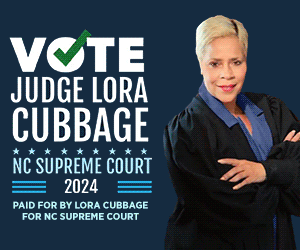Centuries before Meghan, the ancestry of another Royal wielded far-ranging influence on the world
Marc H. Morial / June 8, 2018“Descended from the warlike Vandal race,
She still preserves that title in her face.
Tho’ shone their triumphs o’er Numidia’s plain,
And and Alusian fields their name retain;
They but subdued the southern world with arms,
She conquers still with her triumphant charms,
O! born for rule, – to whose victorious brow
The greatest monarch of the north must bow.”.— “On His Majesty’s Intended Marriage to the Princess of Mecklenberg, and Her Arrival in England,” 1761
For the first time in history, an American woman descended from enslaved people has joined the British Royal Family. Whatever views one may hold on the monarchy, Black Americans unabashedly rejoiced in the inspirational sermon of African American Bishop Michael Curry, the soaring harmonies of the gospel group Kingdom Choir, and the virtuosity of the first Black BBC Young Musician of the Year, 19-year-old cellist Sheku Kanneh-Mason.
Yet the question of whether Meghan Markle is the first Royal of African descent is hardly settled, and intense interest has been renewed in Queen Charlotte, wife of King George III. Charlotte, who married George III in 1761, was descended from the 13th-century Portugese ruler Alfonso III and his lover Madragana, who has been described as a Moor.
Whether “Moor” at the time meant “African” or simply “Muslim” is the subject of much debate. But Charlotte’s true ancestry may have less significance than the deliberate way she was portrayed in portraits to fuel the anti-slavery movement of the time.
The artist responsible for most of Charlotte’s portraits, Sir Allan Ramsay, was an abolitionist, and had painted two formal portraits celebrating the friendship of his own Black grand niece and her White cousin. According to historian Mario de Faldes y Cocom, the portraits were “obviously prompted by or meant to appeal to abolitionist sympathies.”
Ramsay’s known sympathies, combined with the expectation of portraitists to obliterate “undesirable” traits in their subjects, led Valdes to conclude “it would be surprising if the Queen’s negroid physiognomy was of no significance to the Abolitionist movement … Queen Charlotte’s coronation picture, copies of which were sent out to the colonies, signified a specific stance on slavery held, at least, by that circle of the English intelligencia to which Allan Ramsay, the painter belonged.”
Britain would not abolish slavery in most of the empire until 1807, but the court case believed to have galvanized the movement, Somerset v Stewart, was decided in 1772, about a decade after George III’s marriage to Charlotte. In the 1790’s, opposition to slavery took the form of a sugar boycott. Though historians disagree about King George’s motivation – he opposed abolition – he did approve the boycott.
Born a princess in the duchy of Mecklenburg-Strelitz of the Holy Roman Empire, Charlotte married at 17, and bore 15 children, 13 of whom survived to adulthood. She was a connoisseur of music, who sang and played the flute. A series of Mozart symphonies, Opus 3, were dedicated to her. Queen Charlotte’s and Chelsea Hospital in London is named for her. The heartbreak of her life appears to have been her husband’s mental illness, which resulted in her son’s appointment as Prince Regent. She preceded him in death but he was too ill to be aware of her passing.
Did Queen Charlotte’s presumed ancestry – and her possibly enhanced appearance in her portraits – influence the abolition movement? Historians will disagree. But there is no question that Charlotte’s son, Prince Augustus Frederick, the first Duke of Sussex, was an outspoken abolitionist. It is apt that Harry and Meghan have inherited his title.
There is also no question that the cultural influence of the new Duchess of Sussex is certain to have a far-ranging impact. The Commonwealth of Nations is incredibly racially and ethnically diverse, including dozens of primarily Black countries. It’s powerfully symbolic for all the people of the Commonwealth to see themselves reflected not only in the Royal Family but in the embrace of the international community.
Marc H. Morial is the president and Chief Executive Officer of the National Urban League, the nation’s largest civil rights organization.








